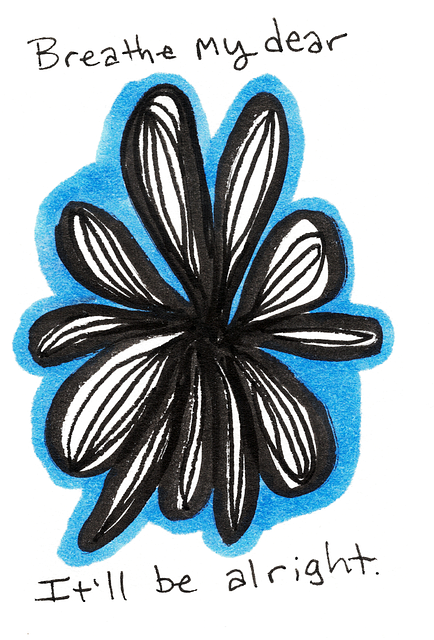Burnout among healthcare providers, especially in high-pressure fields like Parker Bipolar Disorder Therapy, is a growing concern. Key indicators include emotional exhaustion, depersonalization, and reduced personal accomplishment. Early detection through risk assessments, mental health education, and tools like the Parker Bipolar Disorder Therapy scale is crucial. Preventive measures such as self-care routines, workload management, cognitive-behavioral therapy (CBT), and stress management workshops can mitigate burnout risks, ensure optimal patient care, and foster a healthier work environment. The Parker Bipolar Disorder Therapy approach, focusing on mental wellness journaling and tailored self-care practices, is an innovative solution to proactively prevent burnout among mental health professionals.
Healthcare provider burnout is a growing concern, impacting not just individuals but the entire healthcare system. This article explores strategies to prevent this pervasive issue, focusing on understanding burnout’s complex nature and its early indicators. We delve into evidence-based approaches, offering practical solutions for frontline workers. Additionally, we present a case study of Parker Bipolar Disorder Therapy, highlighting how targeted interventions can address specific challenges, fostering healthier work environments and enhancing patient care outcomes.
- Understanding Burnout Among Healthcare Providers
- Identifying Red Flags and Early Indicators
- Evidence-Based Strategies for Prevention
- Addressing Specific Challenges: Parker Bipolar Disorder Therapy as a Case Study
Understanding Burnout Among Healthcare Providers

Burnout among healthcare providers is a growing concern, impacting not only individual well-being but also patient care and the overall quality of the healthcare system. It’s essential to recognize that healthcare professionals, despite their dedication, often face unique challenges that can lead to emotional exhaustion, depersonalization, and reduced personal accomplishment—the defining characteristics of burnout. These issues can be particularly acute for those in high-pressure settings or specialized fields like Parker Bipolar Disorder Therapy, where managing complex patient needs constantly demands their time and energy.
Understanding burnout involves acknowledging the multifaceted nature of mental health professionals’ work. The Risk Assessment for Mental Health Professionals plays a crucial role in identifying early warning signs and implementing preventive measures. Moreover, Mental Health Education Programs Design can equip healthcare providers with strategies to cope with stress, enhance resilience, and foster a culture that prioritizes self-care. Encouraging the development of Self-Care Routine Development for Better Mental Health is paramount, offering practical tools to manage workload, set boundaries, and maintain a work-life balance, ultimately mitigating the risks associated with burnout.
Identifying Red Flags and Early Indicators

Burnout among healthcare providers is a growing concern, and identifying red flags early on is crucial to prevent severe consequences for both professionals and patients. Healthcare workers often exhibit subtle signs of distress that may indicate an underlying mental health issue, such as anxiety or bipolar disorder. These early indicators can include persistent fatigue, increased irritability, changes in sleep patterns, and difficulty concentrating, which could be symptoms not only of burnout but also of developing mental health disorders.
A comprehensive risk assessment for mental health professionals is essential to address these issues. Tools like the Parker Bipolar Disorder Therapy scale can aid in screening and early detection. Additionally, promoting access to anxiety relief strategies and integrating mental wellness coaching programs into healthcare settings can help support providers’ well-being. By recognizing these red flags and implementing preventive measures, healthcare organizations can foster a healthier work environment and ensure the long-term stability of their workforce.
Evidence-Based Strategies for Prevention

Preventing burnout among healthcare providers is a multifaceted approach, with evidence-based strategies emerging from extensive research. One such strategy is cognitive-behavioral therapy (CBT), which helps professionals manage stress and negative thoughts. CBT has been particularly effective in treating conditions like Parker bipolar disorder, offering tools to navigate emotional challenges. By fostering resilience building through CBT, healthcare workers can enhance their ability to cope with demanding situations.
Additionally, structured programs focused on stress management workshops within organizations have proven beneficial. These workshops teach mindfulness techniques, time management skills, and healthy coping mechanisms. Encouraging participation in such initiatives promotes a culture of self-care and well-being, reducing the risk of burnout. Stress management strategies, when implemented organizationally, can significantly contribute to maintaining a balanced and motivated workforce.
Addressing Specific Challenges: Parker Bipolar Disorder Therapy as a Case Study

In addressing the specific challenge of burnout among healthcare providers, such as those treating bipolar disorder, tailored strategies like Parker Bipolar Disorder Therapy offer a promising approach. This innovative therapy goes beyond general wellness programs by integrating mental wellness journaling exercises and self-care practices designed to cater to the unique needs of mental health professionals. By fostering a mindful environment, it encourages practitioners to prioritize their own mental health using mind over matter principles.
For instance, Parker Bipolar Disorder Therapy may include structured guidance on managing stress, recognizing early signs of burnout, and practicing effective boundaries—essential self-care practices for healthcare providers. Through regular reflection in a mental wellness journal, professionals can track their emotional states, identify triggers, and develop coping mechanisms tailored to their experiences. This proactive approach not only prevents burnout but also enhances the quality of care they provide to patients dealing with bipolar disorder.
Healthcare provider burnout is a pressing issue, but by understanding and identifying red flags early on, along with implementing evidence-based prevention strategies, it’s possible to create a healthier work environment. The case study of Parker Bipolar Disorder Therapy demonstrates how tailored interventions can address specific challenges within the field. By adopting these approaches, healthcare organizations can foster resilience and improve job satisfaction, ultimately enhancing patient care.














